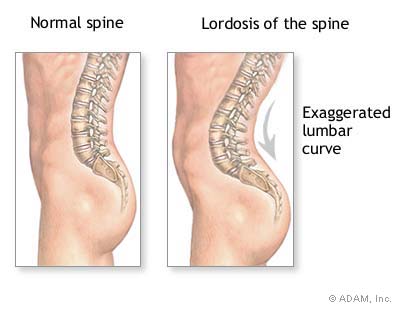If you enjoy dancing but have back issues, learn proper movement techniques so you can continue dancing. Take steps to avoid back issues if you haven’t already. Your spine doctor at the Southeastern Spine Institute close to Charleston, South Carolina, can identify the source of any nagging back pain you get while dancing and treat it. Early back problem diagnosis expedites recovery, enabling you to dance freely once more.
Twisting your spine during dance moves can result in lower back pain or a lower back strain. If you dance frequently or professionally, low back pain, which accounts for 25% of all dancing injuries, can ruin your dancing career. Depending on the kind of injury, the signs and symptoms of back pain from dancing can vary, but they typically include:

Lower Back Pain in Dancers: Stress Fracture
Possibly the most severe lower back problem affecting dancers is this one. Repetitive extension (leaning back) movements cause stress fractures in the lumbar spine. This may involve hopping or jumping uncontrollably with a “sway back” posture as a result of poor core control.
The pars interarticularis, a portion of the vertebra that is loaded during these movements, develops a stress fracture in the lumbar spine. These are frequently described in literature as spondylolysis or a pars defect, which is the progression of a stress fracture.
A healthy pars interarticularis can be seen in the image below at the vertebral level of the blue arrow, and an old stress fracture can be seen at the level of the red arrow.
The risk factors for a lumbar spine stress fracture are:
- Activities that repeatedly cause the spine to arch backwards place stress on the area of the spine that can cause a stress fracture, as was already mentioned.
- Age: Although lumbar spine stress fractures can happen at any age, adolescents are more likely to develop them.
- Sex: Boys are approximately three times more likely than girls to experience a stress fracture. It’s unclear whether this results from changes in the body during adolescence or from variations in activity levels.
Unfortunately, a stress fracture can resemble typical muscular low back pain, making diagnosis challenging. Exercises that involve arching your backwards have a tendency to cause pain, but running, hopping, and jumping can also cause it.
When compared to muscular pain, you might notice that it persists after the activity is finished and occasionally hurts at night. In most cases, the pain is restricted to the lumbar spine and may affect one or both sides. However these symptoms are highly varied.
So how do I find out if I have a stress fracture?
As previously mentioned, there are a few signs we may look for if we suspect you have a stress fracture. You will probably need a scan to look for it if there is any reason to be concerned about one. X-rays only very late in the natural course of the injury do stress fractures appear.
As a result, your physiotherapist, general practitioner, or sports doctor may recommend that you get a CT scan, which can show bony bruising and bones in much greater detail, or an MRI. This bony bruising frequently results from an increase in the load on a bone. Due to the increased detail of MRIs, bone scans are now less common.
Can you heal a stress fracture?
A stress fracture that is treated promptly with rest has a good chance of healing. If you ignore it for too long and keep working out, it could develop into a full pars defect (a fracture that extends all the way through). A condition known as spondylolisthesis may result if this happens on both sides of the spine.
Although most spondylolisthesis are manageable with core strengthening and activity or technique modification, this sounds very frightening. Very rarely, they might require surgical stabilization. However, in a perfect world, we would identify the fracture quickly and allow it to heal completely.
It is likely that you will need some time off from dancing (or whatever other activity may be the cause of it) if you do have a stress fracture. In order to get the best results, we typically determine how long in consultation with a sports doctor or sports physician.
You can work on any flexibility issues and strength deficits in the interim. Tight hip flexors, a weak core, and weak gluteal muscles are the most common issues we see.
Lower Back Pain in Dancers: Lordosis
Congratulations! You can go ahead with some more aggressive physiotherapy. Dancers are quite flexible, as was previously mentioned, but we frequently find that they aren’t equally flexible In the clinic, there are 2 patterns that are frequently observed. One involves standing with the dancer’s back swayed back excessively, or in lordosis.
If you have a tendency to do this, your hip flexors will likely be very tight. Hip flexor stretching will improve your posture while standing and moving in the short term.
You should focus on core control over the long term. Instead of using your hip flexors to stabilize your back, do this to prevent long-term tightness in those muscles.
As a result, your low back is better supported. Try one of these three articles if you’re not sure where to start with these:
Breaking the habit of standing with your back swayed is the last thing you need to do. Back pain may return even if you have a strong core and nice, loose hip flexors if you don’t actively correct your posture.
Lower Back Pain in Dancers: Equal Splits?
Splits positions are the second pattern we observe in uneven flexibility. Often dancers will favour their good splits side for performances. As a result, the good leg forward becomes increasingly loose while the difficult leg forward remains constant.
You rely on relaxed hamstrings in the front leg and relaxed hip flexors in the back leg to perform a straight split. Because of this, repeatedly practicing the splits on one side can make the hamstrings and hip flexors on the other side relatively less flexible.
Low back problems can result from this muscular tightness and imbalance around the pelvis.
The solution for this one is fairly simple. Continue to work on your bad splits to keep each side fairly even.
Most low back pain is very treatable for dancers. However, a thorough evaluation with a physiotherapist is recommended to get the best outcome.
This should provide you with a detailed plan to work on increasing the strength of other muscle groups and the flexibility of particular muscle groups. Don’t forget to look at technique and posture.
Even if they are strong and flexible, someone with poor postural awareness or potentially hazardous movement patterns can still put their body in painful positions.
References:
https://www.sciencedirect.com/science/article/pii/S0031395516342894
The Social – Dance Moves for Back Pain
Reference:
https://sportandspinalphysio.com.au/management-of-low-back-pain-dancers/
https://southeasternspine.com/dancing-and-your-back/
